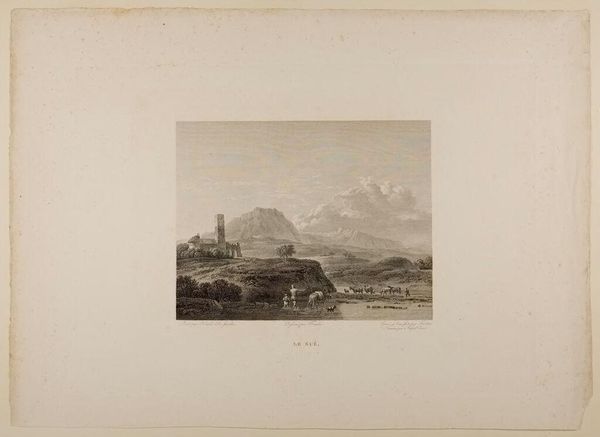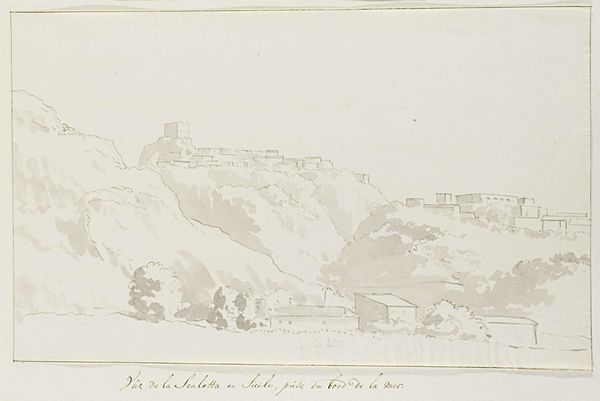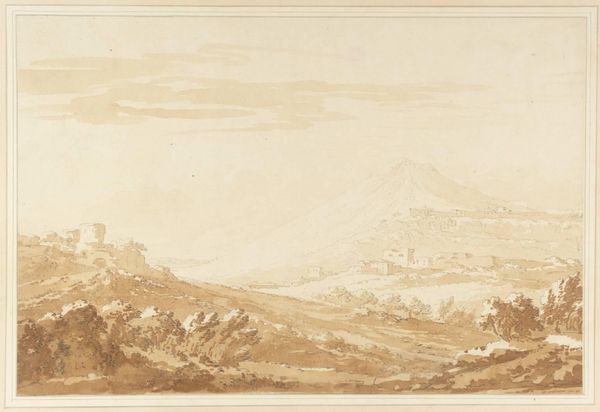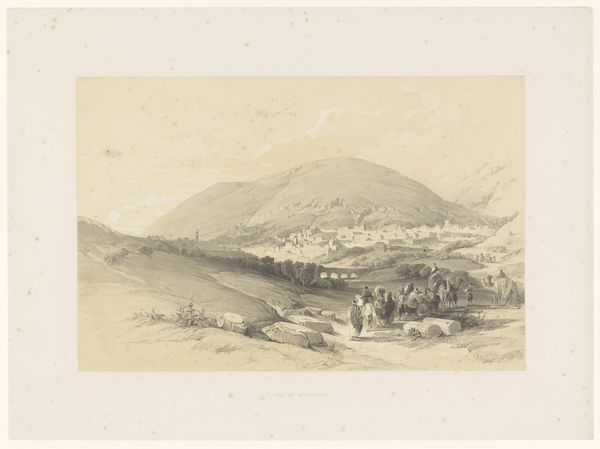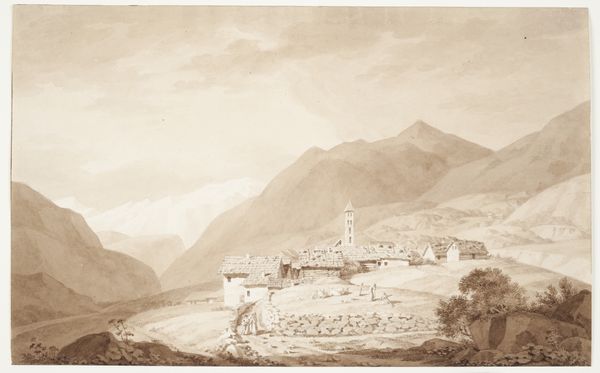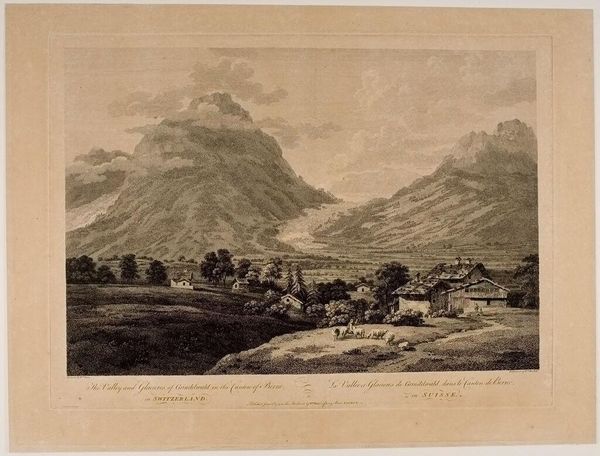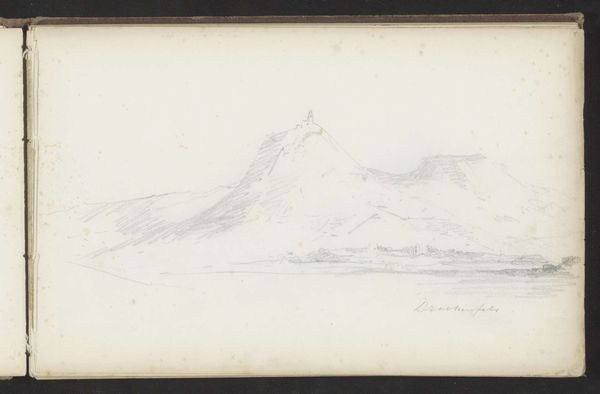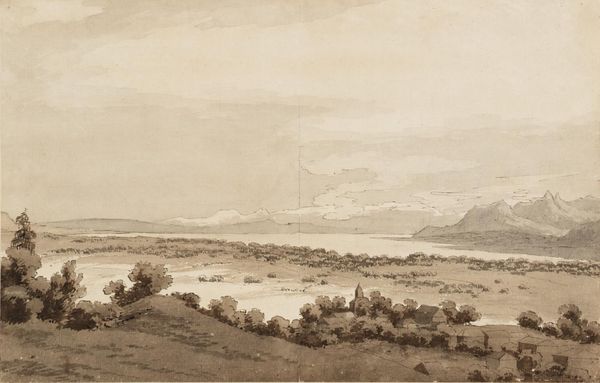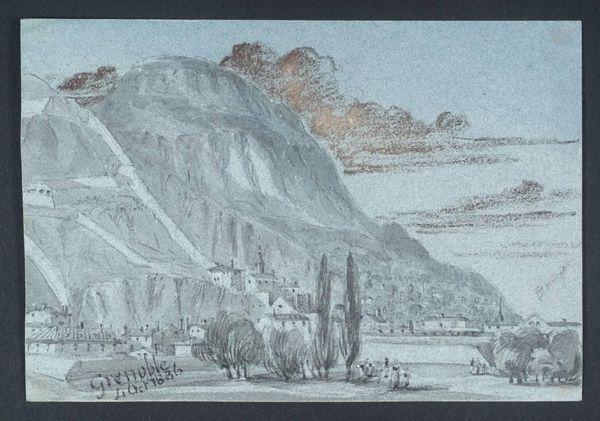
Dimensions: height 183 mm, width 530 mm
Copyright: Rijks Museum: Open Domain
Editor: This is "Gezicht op de stad en het kasteel van Taormina," a watercolor and etching by Louis Ducros, created in 1778. It's incredibly delicate. The pale colors and the panoramic view give it a somewhat detached, almost dreamlike quality. How do you interpret this work? Curator: It's interesting that you find it detached. I see it as a product of its time, a moment when the “Grand Tour” was fashionable. Think about who could afford such a trip – primarily wealthy, white Europeans. Ducros isn't simply painting a landscape; he's creating a commodity for a specific, privileged audience. What stories of colonialism and inequality might be invisibly etched into this idyllic scene? Editor: That's a perspective I hadn't considered. The scene itself seems so peaceful, but placing it in the context of colonialism shifts everything. Do you think Ducros was consciously aware of that dynamic? Curator: It's hard to say for certain, but artists rarely exist in a vacuum. Even if Ducros wasn't deliberately promoting a colonial agenda, his work was inevitably shaped by the power structures of his time. Consider the romanticized view of the "exotic" South that it offers these Northern European consumers. Who gets to have this view and who is absent? Editor: So, in looking at this artwork, we should be asking questions about the relationship between the artist, the subject, and the audience? Curator: Precisely! And consider what’s *not* depicted, as much as what is. What labor built this city, who lived outside the frame, what dynamics were playing out among those various communities? That to me is an important lens through which to view this piece. Editor: That gives me a lot to think about when I look at landscapes from this period. It’s like uncovering a hidden layer of meaning beneath the surface. Thanks so much for your insights. Curator: My pleasure. It's crucial that we keep questioning, keep digging, and keep broadening the narrative. Art is rarely just art; it’s a conversation.
Comments
No comments
Be the first to comment and join the conversation on the ultimate creative platform.
